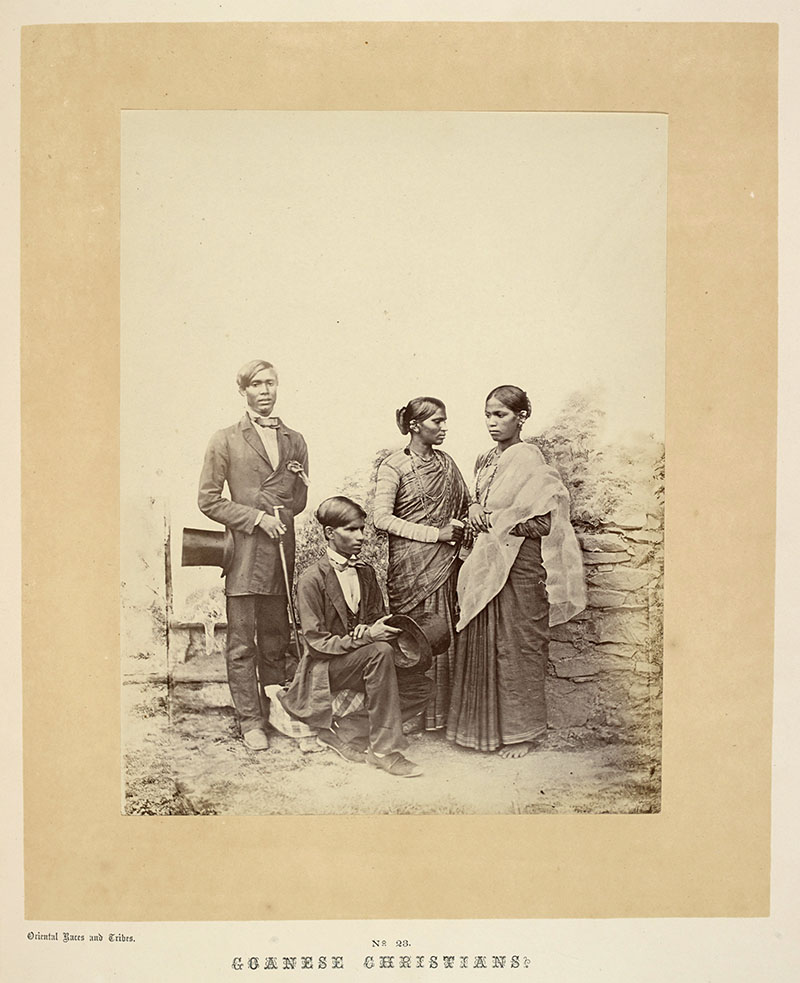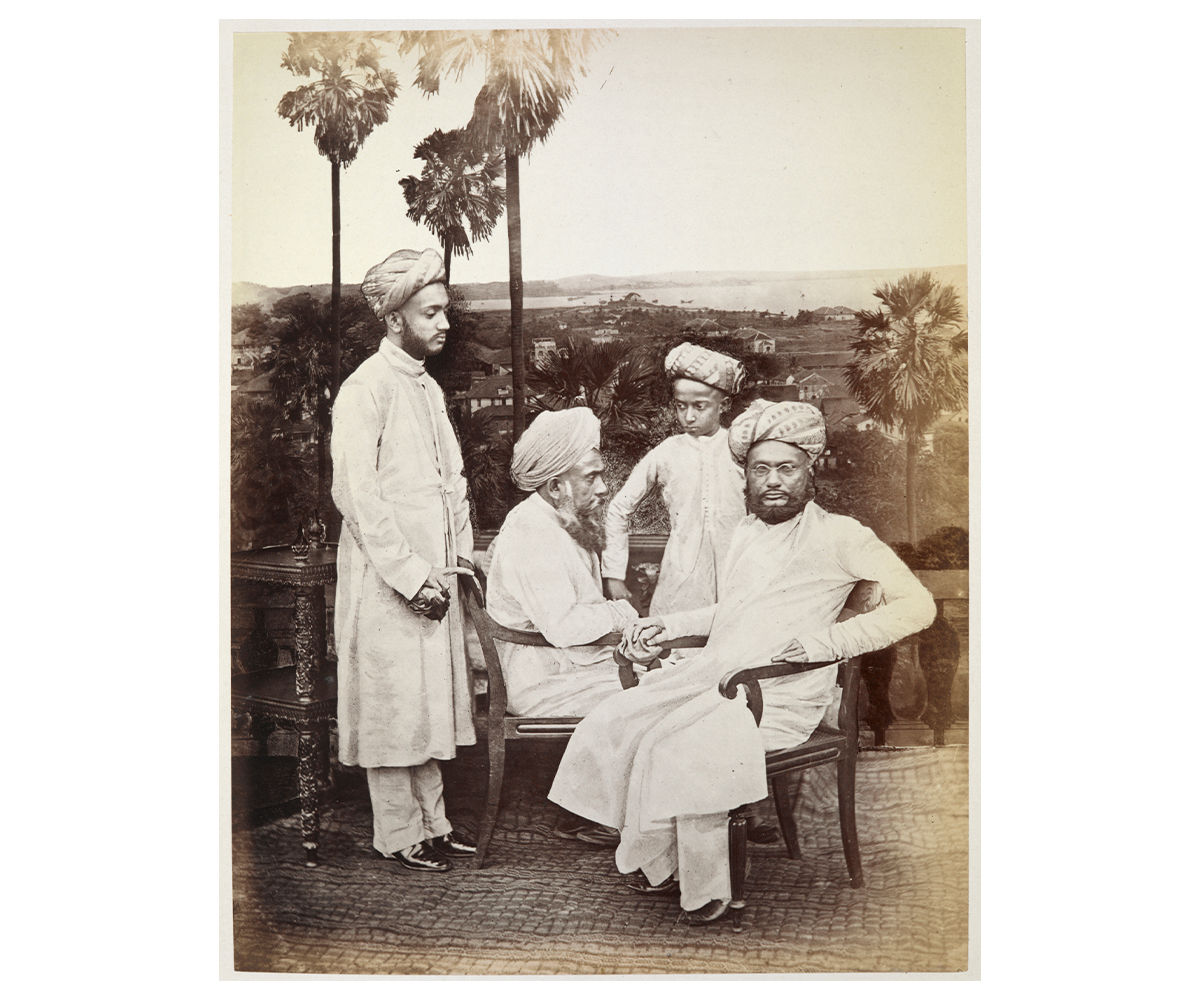ARTICLE
The Oriental Races and Tribes, Residents and Visitors of Bombay
A majority of the images, produced as calotypes rather than the then-more-popular daguerreotypes, were taken by Johnson and Henderson and date back to the 1850s, during the early decades of photography’s invention in Europe. Several of these had previously appeared in the Indian Amateurs Photographic Album (IAPA), a monthly publication by the Photographic Society of Bombay. A small number of photos were taken by other professional photographers, such as Narayan Daji, brother of the reputed scholar Bhau Daji Lad – both of whom were also members of the Bombay Photographic Society – as well as by other society members, scholars and some amateurs. Images taken from the IAPA that had no distinctive backdrops were incorporated into the album using a process known as combination printing. In such instances, the portrait negatives were superimposed on landscape negatives that were carefully painted over to prevent overlap to produce images that showed the ethnic communities in their seemingly-original locales.
The publishers had initially planned to publish three volumes of the book, with the third meant to cover miscellaneous groups of people not covered by the first two, but this was never published, for reasons presently unknown. At its time of publishing, the album was an important photographic record and administrative document of the Empire’s key territories in the subcontinent. It now serves as testimony to the thoroughgoing efforts of the British crown to enlist text and image in carrying out and consolidating its imperial mission. Copies of both volumes are, at the time of writing, maintained in the British Library, London, UK.
Bibliography
Our website is currently undergoing maintenance and re-design, due to which we have had to take down some of our bibliographies. While these will be re-published shortly, you can request references for specific articles by writing to hellomapacademy@map-india.org.








